Updated December 30, 2023
Wildlife tourism encounters like the ones shared by these travel bloggers can make memories to last a lifetime. Wildlife in Europe, Asia and Antarctica, including whales, seals, penguins, and bears abound!
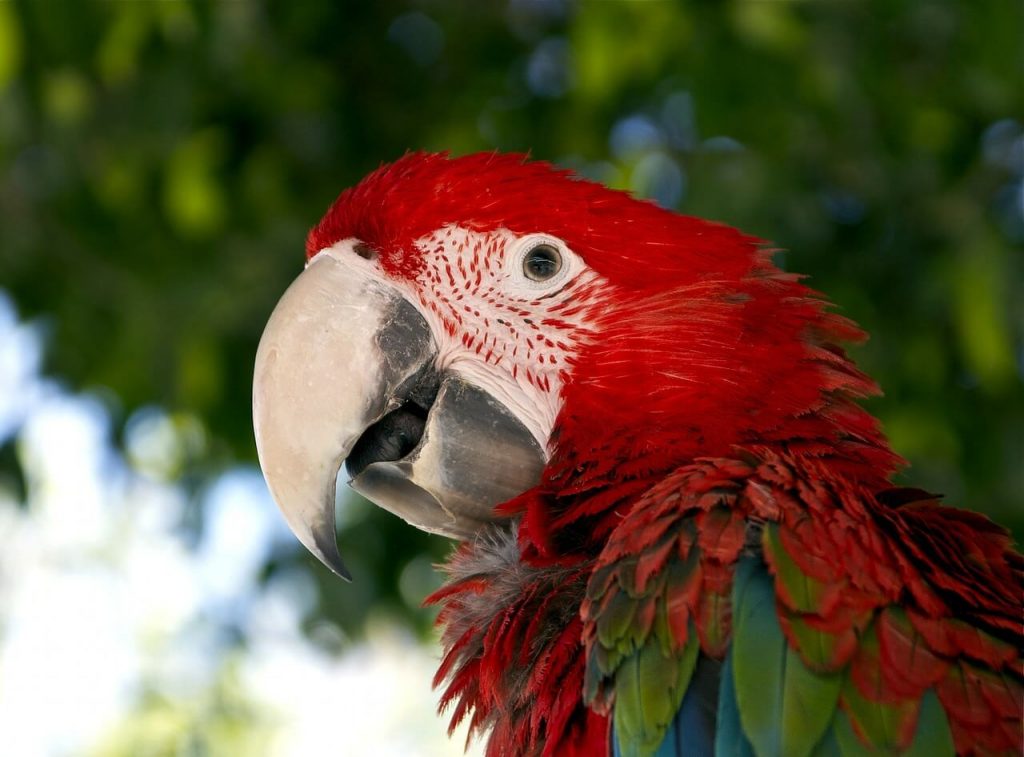
Table of Contents
ToggleWildlife Tourism: Wildlife in Europe, Americas and Antarctica
Swimming with Spotted Eagle Rays in Belize
One of the best places for wildlife tourism adventures in the world is Belize. Whether you are looking for howler monkeys and bird life in the interior jungle or exploring the reefs in the Caribbean, this country never stops giving with its wildlife encounters. My personal favorite wildlife encounter in Belize was snorkeling with beautiful spotted eagle rays outside of Caye Caulker in the Hol Chan Marine Reserve. Part of the Belize Barrier Reef, the second-largest reef system in the world after the Great Barrier Reef, Hol Chan is full of amazing marine life including turtles, stingrays, nurse sharks, colorful fish, and my personal favorite – the spotted eagle ray.
“Animals are such agreeable friends -- they ask no questions, they pass no criticisms.” - George Eliot Share on XThese rays are found occasionally in the Caribbean, and after manta rays they are the largest of the eagle ray family. They can reach widths of nearly 11 feet (more than 3 meters) which makes them especially impressive. But what’s especially beautiful about swimming with spotted eagle rays is their pattern, which looks almost like black and white leopard spots. They are quite shy, unlike mantas who will come right past you, so they are not common to find. While they are technically dangerous to humans due to their venomous tail, they are not aggressive and will just glide past you so long as you don’t provoke them! Swimming with them is a majestic experience so be sure to include snorkeling or diving with these gentle beauties on your Belize itinerary.
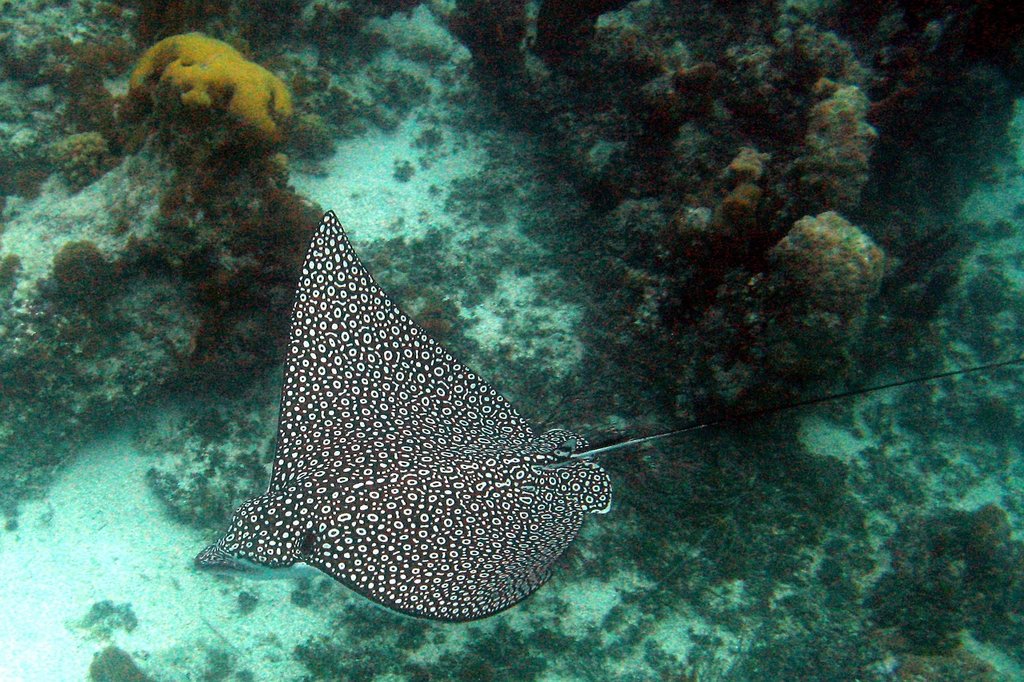
Allison Green blogs at Eternal Arrival.
Wildlife Tourism: Swimming with Sea Lions in Callao, Peru
I did not know that there was such thing as swimming with sea lions in Peru, but am I glad I found it. Most people only want to visit Peru for the beauty of Machu Pichu or maybe to see Cusco. But there does exist eco-friendly wildlife tourism in which you can swim with the sea lions at Palomino Island. They call this area the “Little Galapagos” of Lima. You will need to get on a boat to do this (obviously). You can set sail from Callao, where a smaller boat will put you on a yacht. From there, you will ride for about 90 minutes over to Peru.
Make sure to bring some ginger candy or medicine with you in case you get seasick. Keep your eyes peeled for sea lions. They may just pop out of the water at you! Don’t worry too much about getting photos–you will have opportunities. Once you get to the island, there will be thousands of sea lions for you to enjoy. It is such a magical and wonderful experience! It is like walking into a new neighborhood filled with new people to meet. There are a few rules to bear in mind: Do not touch the sea lions (they can touch you, however). Don’t be loud or scream. Don’t go onto their island. It’s their house–you’re just a visitor! There are no sharks around here or even orca whales. The larger sea lions are protective of the island, so you don’t want to get near one of these 600 lb. guys.
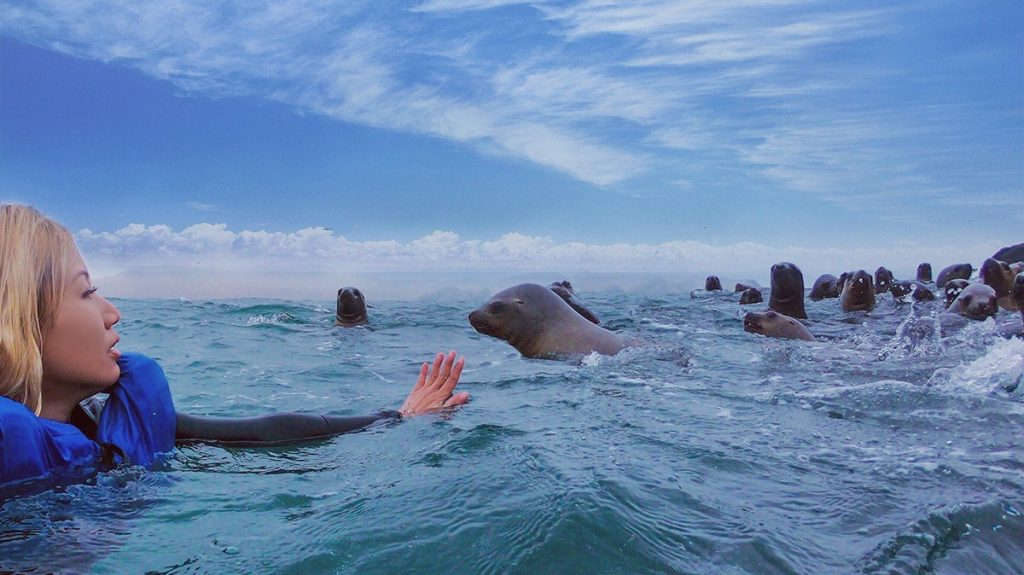
Kaila Yu
Seeing Penguins in the Falkland Islands
Visiting the Falkland Islands is a must-do for any wildlife lover. The sheer scale and accessibility of the birds and marine mammals that call this remote archipelago home is breathtaking. I visited the Falkland Islands for ten days last year, and was lucky enough to see an array of animals during my time on the islands. Penguins are in plentiful supply and all five species (Gentoo, Rockhopper, Macaroni, King and Magellanic penguins) were spotted with thanks to local guides.
Elephant seals and sea lions abound on the beaches, and you have to be careful to watch your step as you pass through the tall tussock grass. And birdlife is diverse and flourishing due to the careful management of the islands’ eco-systems. If you’re lucky (as I was) you may even spot one of the resident Patagonian grey foxes or, perhaps more randomly, a reindeer! Both species were introduced to the islands, but few remain today.
The greatness of a nation and its moral progress can be judged by the way its animals are treated Mahatma Gandhi Share on XThe wildlife of the Falklands is abundant in supply, and diverse in nature. It’s not hard to find, but if you want the best experience, it’s best to ask the locals for advice or hire a guide to show you around. In saying that, on some of the islands, the wildlife comes to you! Penguins parade right in front of the porch on Sea Lion Island, and on Weddell Island I spotted a fox, seal, and reindeer right from my bedroom window!
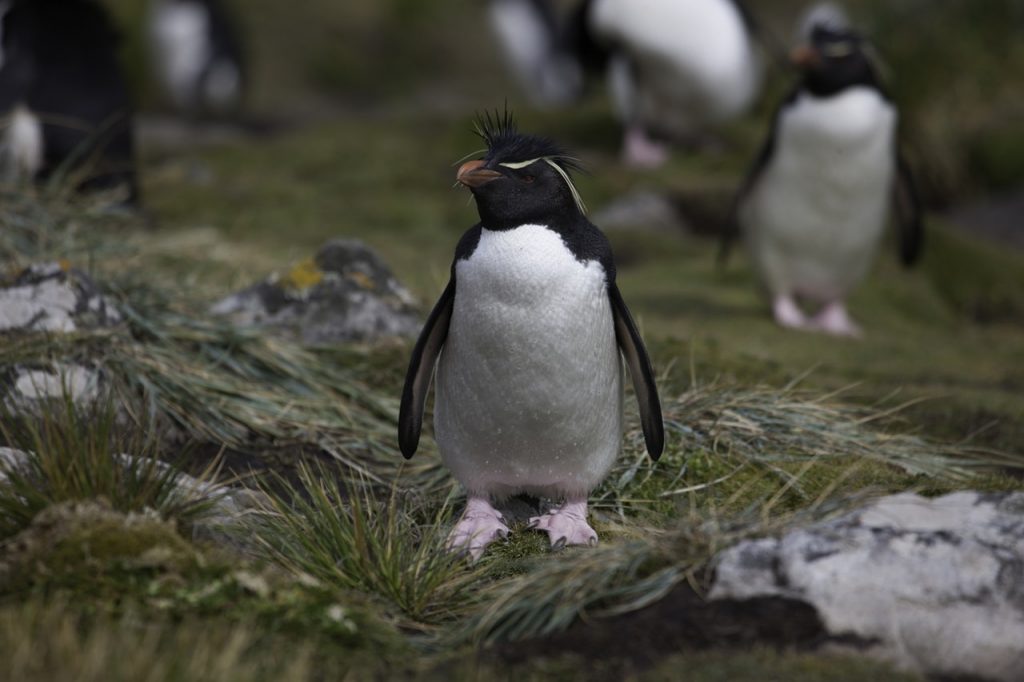
Nadine Maffire blogs at Le Long Weekend.
Swimming with Sea Turtles in the Caribbean
One of the biggest reasons that I travel is to catch glimpses of the wildlife wherever I go. From the sloths in Panama to the marmots munching away in Canada, wild animals have always been what’s truly drawn me to specific places.
It was in the West Indies that I truly fell in love though.
Having had dolphins and whales stream alongside my boat while crossing the Atlantic, I was mesmerised by sea life from day one. When I arrived in the Caribbean, a new creature utterly charmed me.
My first encounter up close with a sea turtle was in Tobago Cays in the archipelago of St. Vincent and the Grenadines. Gliding sedately through perfect water, the turtle was supremely undisturbed by my presence. He simply munched on eel grass and lazed about in the warmth.
Later on, in Martinique, sea turtles would swim through the anchorage, exhaling like sneezes and revealing their presence. Then again in the Bahamas, I was snorkelling across a reef when I found myself face to face with a young turtle. I’m not sure which of us was more surprised.
There is nothing more breathtaking than sea turtles relaxed in their natural environment. These long-distance travellers are possibly the most graceful marine creatures I’ve ever found and coming across them was always a highlight of my day.
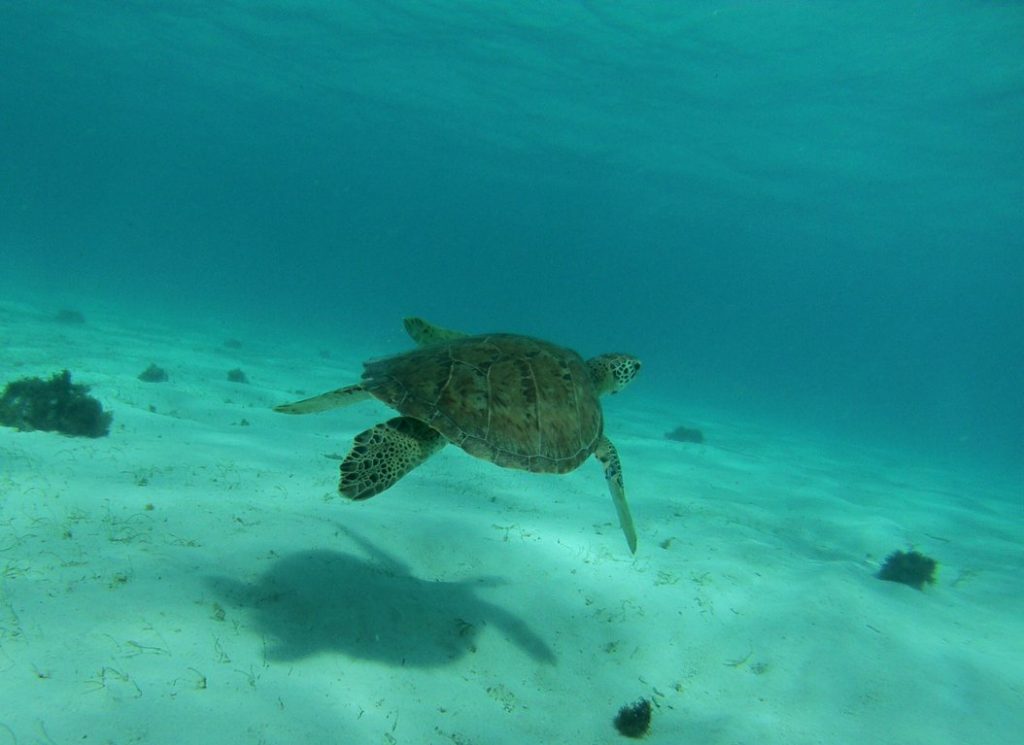
Kitiara blogs at Kitiara Pascoe.
Spotting a Woolly Monkey in the Ecuadorian Amazon
We had registered for two months of volunteer work on a project in which wild animals, which had previously been kept as pets or caught for food, were rehabilitated and released back into the wild under supervision.
A quiet whine filled the dark night. We were sleeping in the wilderness of the Ecuadorian Amazon in a lonely hut, far away from any civilization. The unknown noises caused us to joke about the ghost that had visited us again in order to cover up our own anxiety.
The whine had stopped, but I found no sleep. Time passed at a snail’s pace. Suddenly I saw a shadow moving behind the window. Knowing that the fly screen would hardly prevent larger animals or humans from entering our simple bedroom, I remained as if frozen and held my breath. The shadow remained immovably directly above me! Quietly I tried to find the torch next to my bed and whispered: “George, George, are you awake? No answer.
It was pitch dark. My heart was beating so fast that my ears were ringing. Bang! My flashlight fell off the chair with a loud thud and rolled across the floor. At the same time, a frightening screech filled the night, driving through my legs and down my spine. George and I had jumped up next to our bed with one leap and stood pumped full of adrenaline ready to meet our adversary with all our strength. “Ahhh, it’s just Julio” I sighed with relief. We stood eye to eye with one of the five woolly monkeys we had been allowed to accompany on their way back to freedom and whom we had not seen for a few days. Frightened, Julio jumped on a distant branch in shock and looked at us reproachfully before disappearing into the jungle again.
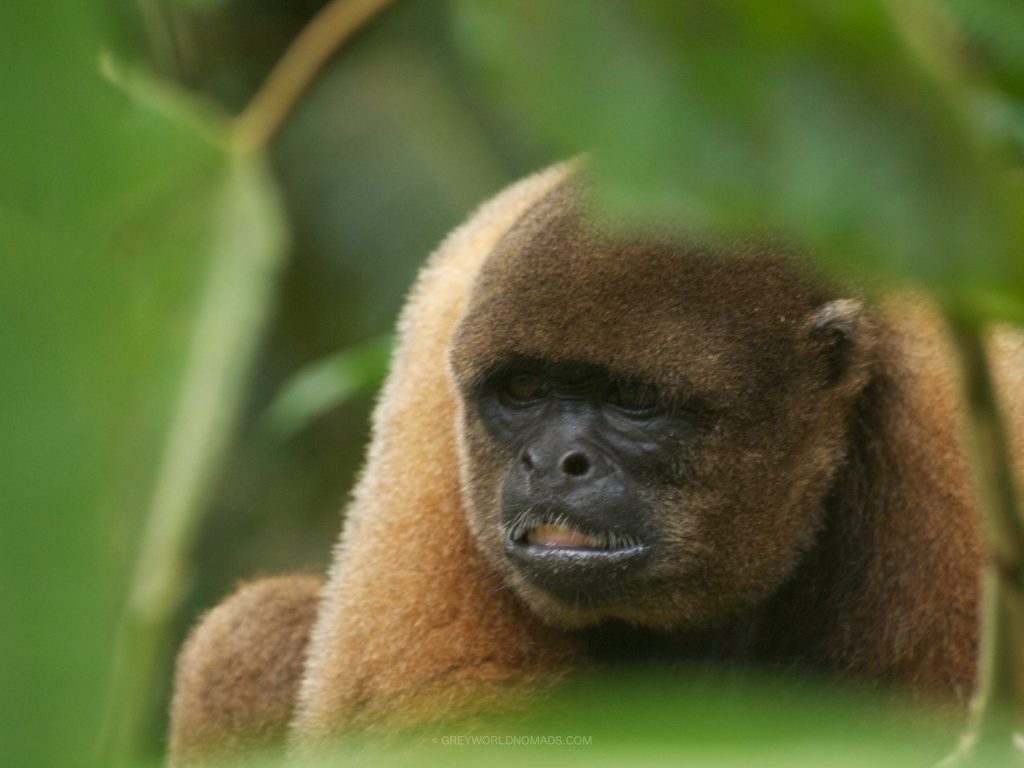
Marcelle Simone Heller blogs at Grey World Nomads.
Sea Lions, Tortoises, and Iguanas of the Galapagos Islands
In the Summer of 2017, I visited the Galapagos Islands located 1000km off of the coast of Ecuador. This location is famous for being the location that inspired Darwin’s Theory of Evolution after his visit there in 1835.
The Galapagos Marine Iguana, only found in these islands, seemed to be everywhere you went and sometimes numbered in the dozens. They are not necessarily “pretty” but their wide-set eyes, smashed faces, and spiky black scales made them interesting to watch.
Galapagos is also home to nearly half of all of the world-famous Blue-footed Boobies. These rare creatures cannot be missed with their bright blue feet which are used as a mating ritual to attract members of the opposite sex.
The giant Galapagos Tortoise can exceed five feet in length and reach up to 550 lbs. One of the highlights of my 10-days was taking a short bike ride to a turtle farm that housed literally hundreds of these amazing creatures in all ages and sizes.
And the absolute highlight of my trip, snorkeling at Kickin’ Rock. There were sharks and turtles swimming at our feet, but the best for me was the gorgeous colors exposed by the literally thousands of sponges, mollusks, crustaceans, sea anemones embedded in this gigantic rock in the middle of the Pacific. It was a trip I will never forget.
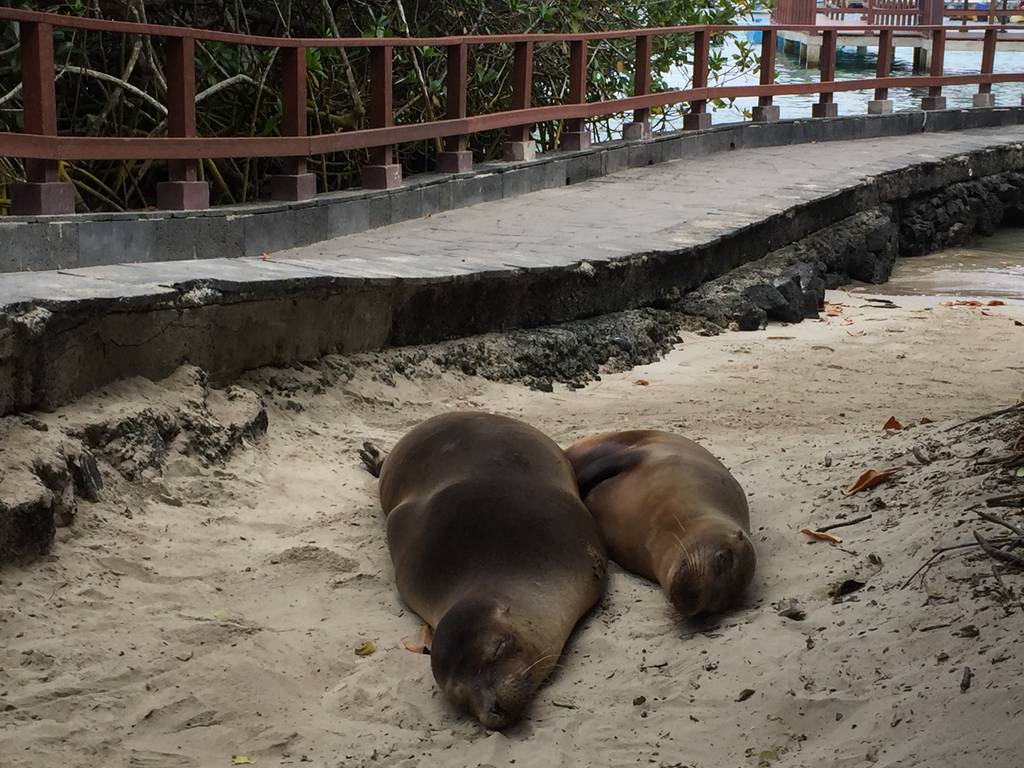
Toby blogs at The Cajun Traveler.
Swimming with Whale Sharks in Isla Holbox, Mexico
Last June I made my wish of swimming with whale sharks come true in Isla Holbox, Mexico. I had wanted to swim with whale sharks for years but I thought I would never make my wish come true for two reasons – because it’s usually very expensive, and when it is not, it’s done in an irresponsible manner, by feeding whale sharks or getting too close to them with boats.
An understanding of the Natural World and what's in it is a source of not only a great curiosity but great fulfillment. Sir David Attenborough Share on XIn Isla Holbox, whale shark swimming is strictly regulated and it is also possible for a set period of the year (June 1st to September 15th). Operators and swimmers have to adhere to a strict code to avoid disturbing the sharks, which means encounters are very fast – but so amazing and intense. Whale shark swims are in a place about three hours from the island, where sharks gather every morning during the season. When we visited, there were about 150 sharks, which was absolutely incredible. I got into the water and was mesmerized by the size of these huge fish, as big as a bus, floating in the depths with their graceful star-spotted skin looking like a huge underwater sky. I really wish I’ll have the chance to do it again, it was truly unforgettable.
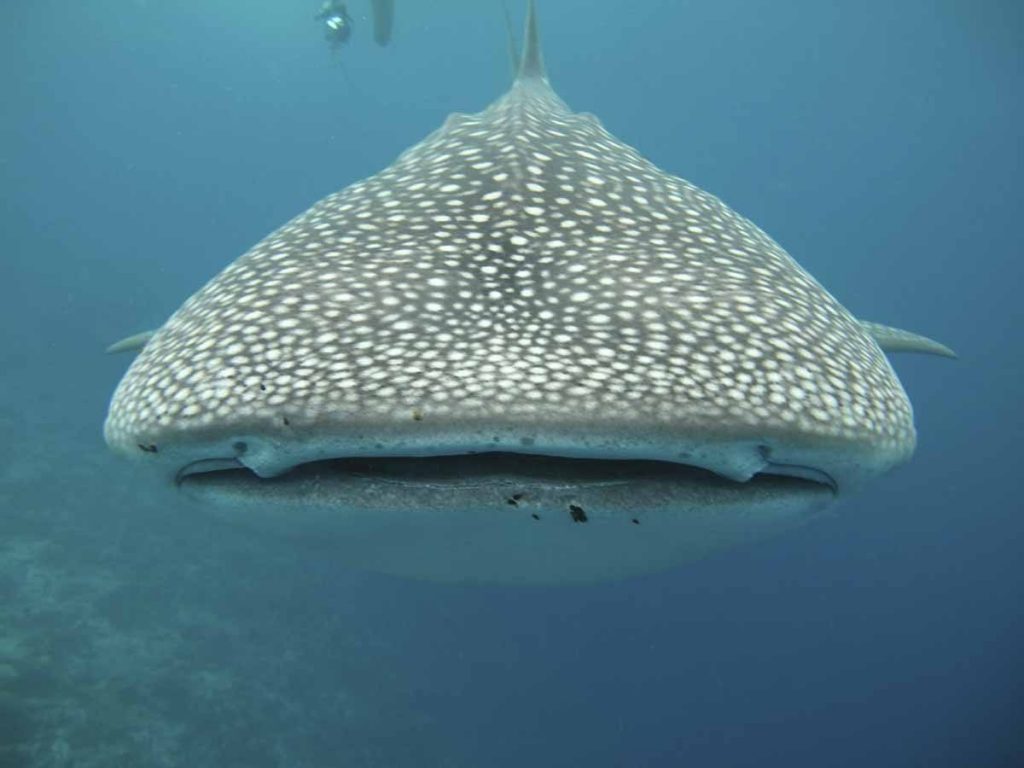
Margherita blogs at The Crowded Planet.
Seeing King Penguins in Chile
Usually found in the remote sub-Antarctic islands, the King Penguin is a species that isn’t easy to approach and observe without taking an expensive cruise trip. However, if you have the chance to find yourself in Chile, a colony has set up camp for the past decade in Tierra del Fuego, near the town of Punta Arenas.
“Man is rated the highest animal, at least among all animals who returned the questionnaire.” ~Robert Brault Share on XAs soon as we heard about this King Penguin colony, we packed our bags, rented a 4WD and took the next ferry across the Magellan Strait to the little town of Porvenir. From there, we drove on dirt roads until Useless Bay, in the far South of the country! Here, a national park has been created to protect the penguins during the breeding season.
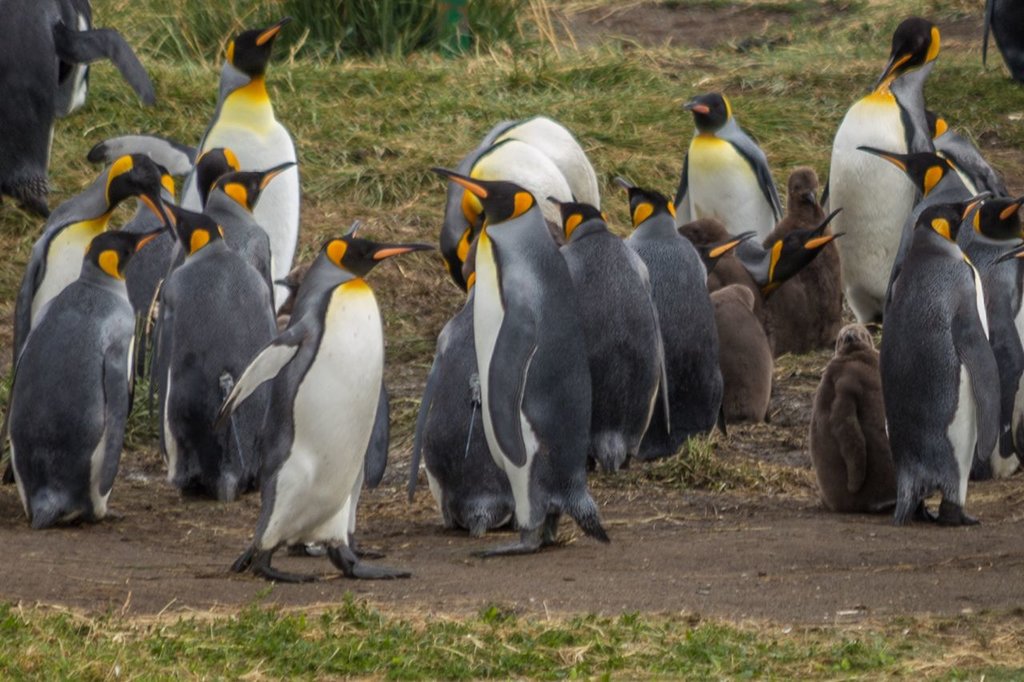
Boardwalks and wood fences have been built to limit access to the penguins but a few observation points have been set up about 40 metres from where the colony usually gathers. It’s the perfect place for visitors to birdwatch without disturbing the penguins. It was such an incredible encounter to witness these beautiful animals and their chicks walking around.
Read the complete adventure at Tales from the Lens.
Seeing Gentoo Penguins at Ushuaia, Argentina (Patagonia)
Penguins have been my favourite species for as long as I can remember so when I found out that you could walk along with two types of penguins in Ushuaia, I knew I had to go. Tours can be booked online through Piratour or at their ticket office in Ushuaia. On the day of the tour, you check in at their office where they will give you an official penguin boarding pass!
The penguins live on Martillo island so you have to take a boat to get there. They only allow 20 people on the island at a time so the group gets split in two according to the colour of your penguin pass. Thankfully I was on the first group as I don’t think I would have been able to contain my excitement any longer.
As soon as I got off the boat you could see hundreds of Magellanic penguins waiting to greet you. The penguins are pretty curious and will come up to you although the guides ask that you always stay 3m back. Aside from the Magellanic penguins there is also a small colony of Gentoo penguins on the island that you can see, and to much surprise that day we also saw a king penguin. King penguins aren’t native to the island and it’s relatively new that some have been appearing there, but it was an amazing sight to see. If you are a lover of penguins, I highly recommend this tour. It’s an amazing eco-friendly way to see these incredible creatures up close in their own habitat.
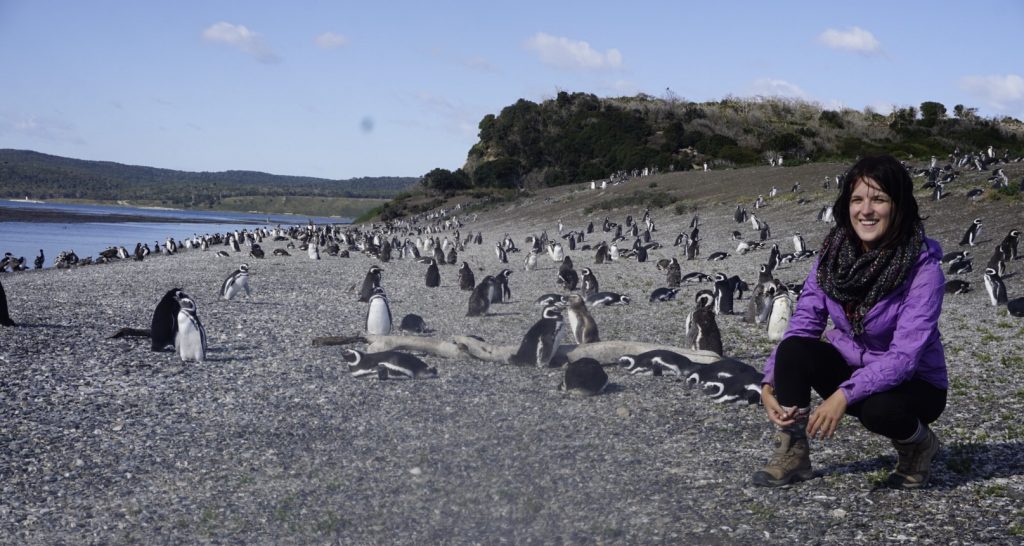
Lora Pope blogs at Explore with Lora.
A Wildlife Smorgasbord in Costa Rica
From the cloud forests of Monteverde to the beaches of Tortuguero, Costa Rica is home to a wide array of habitats and wildlife. This was the destination of my first ever solo trip, an adventure I will never forget. I spent the majority of my time in Puerto Viejo, a small town along the Caribbean coast. It is here where lush rainforests meet white sand beaches, creating an exciting opportunity to see the diversity of wildlife that Costa Rica has to offer.
In Puerto Viejo, nature surrounds you. You’ll hear monkeys howling as you fall asleep at night and birds chirping as you wake in the morning. During my time in Costa Rica, I was beyond excited to come face to face with such a variety of animals. Over the course of my trip I saw dozens of exotic birds, fish, monkeys, opossums, raccoons, turtles, lizards, snakes, tree frogs, and my personal favorite, three-toed sloths.
What I loved most about my time in Costa Rica was the accessibility and diversity of its wildlife. Costa Rica is one of the most biodiverse countries in the world. No matter where you are you will be surrounded by nature and wildlife. A visit to Costa Rica is a total immersion into nature the way it was meant to be and an unforgettable wildlife tourism adventure.
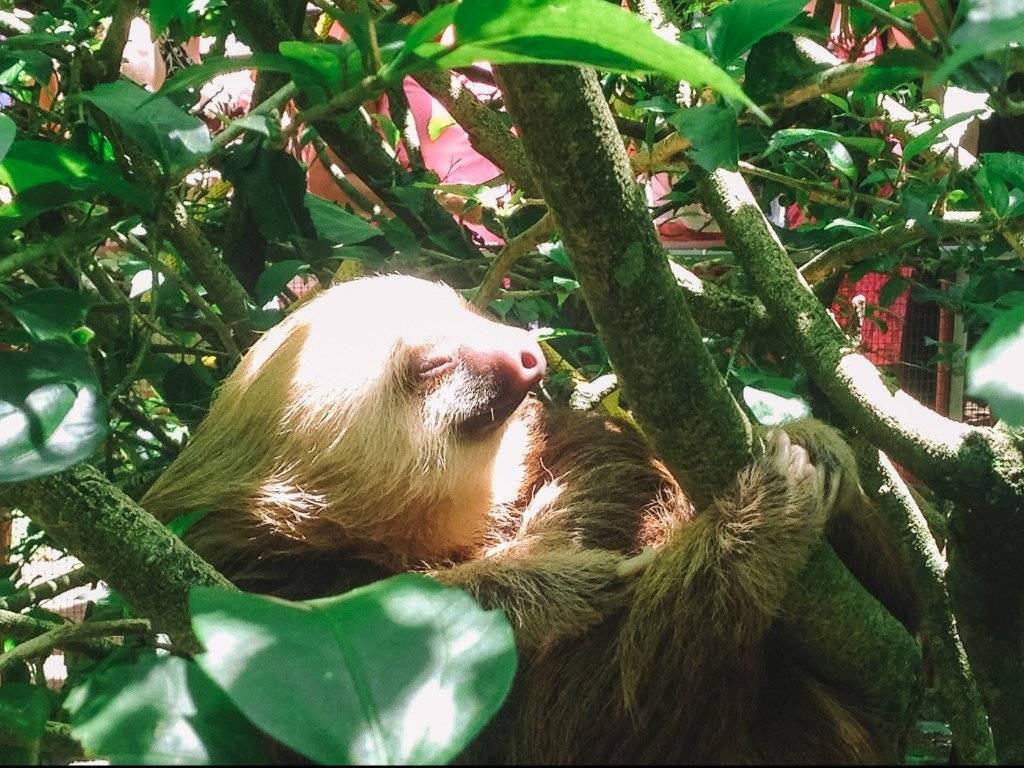
Eden Fite blogs at Rock a Little Travel.
Taking a Jungle Safari in Suriname
During our trip in Suriname, we headed out to the jungle for 4 days to sleep in hammocks, hunt for little pigs, and fish all day. Days started and ended with the sun, and once we set up the camp, we took a boat to find shaded place where we could fish with our nets. Most days, we filled our cooking pots with catfish along with the usual rice and beans. One morning, it was time to check the nets for fish. The piranhas surely know how to make a dramatic entrance. Because we had caught a bunch of them in our net with the other fish, we ended up pulling up a net full of them and half-eaten fish.

During strolls through the jungle, we saw many monkeys and colorful birds, such as huge aras (macaws) that are amazing to see. Something for the adventurous minded were the daily baths in the river, knowing well how many piranhas lived in it and what they are capable of. Also stories of caimans in the water had been told but luckily we didn’t encounter either while playing in the water.
Swimming with Sea Lions in the Galapagos Islands
I am a huge fan of watching and photographing the local wildlife on my travels, and so it’s no surprise The Galapagos Islands have been high up my bucket list for some time now! And when I finally got there last year, The Galapagos Islands blew me away. Not only was the scenery stunning with some of the best unspoilt beaches I’ve ever seen, but it was teeming with wildlife.
The wildlife in the Galapagos has little reason to fear humans and the result is they will happily walk right up to you and poke their noses (or beaks) down your camera lens! But my absolute highlight in regards to wildlife tourism in the Galapagos was swimming with sea lions. They are so curious and playful diving and swooping around you. It was such a privilege to be so close to such amazing wild animals who were choosing to interact with us – not being forced to in captivity. Visiting The Galapagos Islands was such a special experience, one I’m keen to repeat again one day!
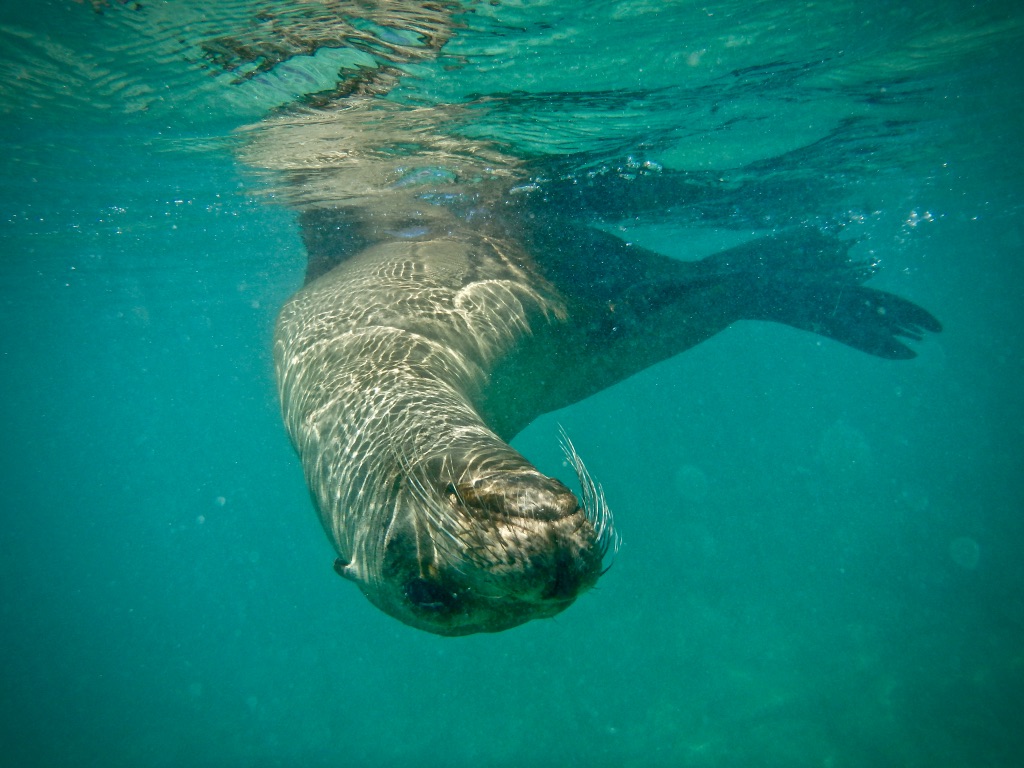
Leanne blogs at The Globetrotter GP
Seeing Penguins in Antarctica
I’ve been lucky to have had several wildlife encounters when traveling but my favorite wildlife tourism viewing took place when I visited Antarctica on an expedition cruise a few years ago. The White Continent has no shortage of amazing and diverse wildlife that I got to see up close, including seabirds, whales, seals, and penguins. While I enjoyed viewing all the wildlife, I was most charmed by my close encounters with penguins of various species (mostly Adélie, gentoo and chinstrap penguins). I saw large numbers of penguins swimming, walking around or just standing bracing themselves from the cold and wind. It was also incredible to see all the mother penguins feeding their little babies.
There are rules that visitors to Antarctica are required to keep a safe distance from the penguins and not touch them at all but I was able to just stand there and let the penguins approach me or walk right by me. Penguins are not afraid of human visitors so they would happily and frequently waddle over. Even though I saw so many penguins every day, I never grew tired of seeing them – in fact they were one of the highlights of my trip to Antarctica.
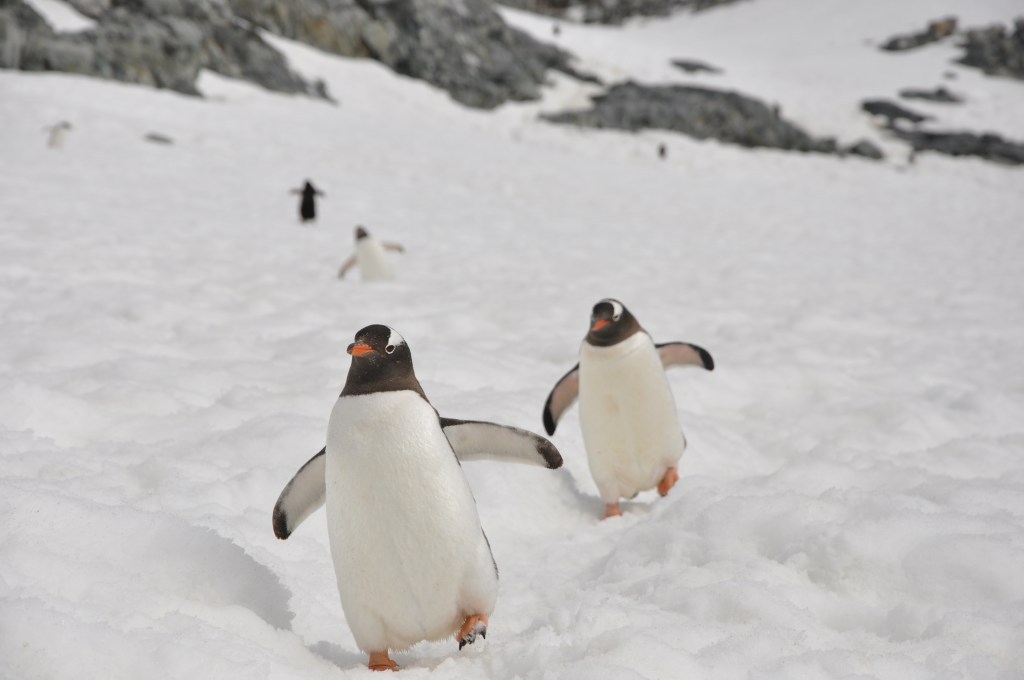
Matilda blogs at The Travel Sisters.
Wildlife Tourism: Meeting an 18-ft Crocodile on Costa Rica’s Tarcoles River
We saw the eyes and nostrils appear first from the water, followed by a slither of scaly vertebrae, and then the long tail flicked up.
He was 18 feet long, with teeth for days. Our guide Rodrigo had left the boat, raw chicken in hand, and had been slapping the surface of the water with it for several minutes to entice the croc. He told us the approaching animal’s name was Bin Laden.
The beast came to a halt at the riverbank, his gargantuan cranium calmly stopping about two feet from Rodrigo’s bare toes. He dangled the chicken closer, letting him really smell it. Bin Laden lifted his head towards the scent, and Rodrigo let go. The croc snapped his jaws loudly catching the fowl on his huge rough tongue. He slid back into the water, resting by the bank, seeming calm and content. We stared in amazement at this display, which seemed to be a familiar ritual.
As Rodrigo offered a second morsel, on the boat the other guide Diego reached down into the water and lifted the end of the massive scaly tail by about a foot. He offered, “Would you like to touch his tail?” I reached my hand down into the murky river water. The tail felt rough and tough like old leather, but actually touching this animal for just those few seconds was exhilarating.
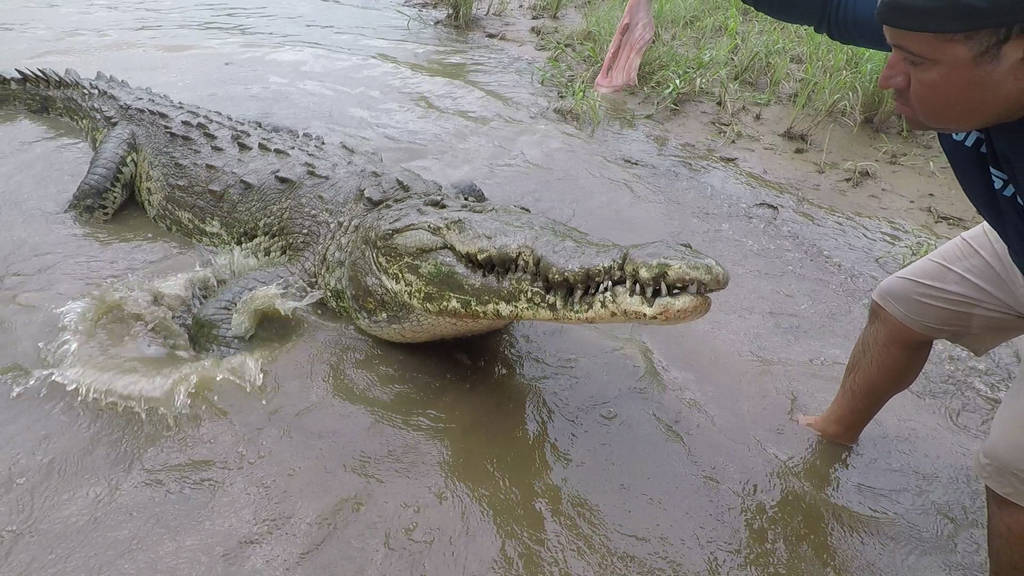
Karen Worrall blogs at Cruise Ship Karen.
Wildlife Tourism Encounters in North America
Seeing Bears (and More!) in the Canadian Rockies: Alberta/British Columbia, Canada
If you are visiting the Canadian Rockies, make sure you watch for wildlife! We did an escorted wildlife tourism encounter in Jasper National Park, but you can see wildlife wherever you drive or hike in the contiguous national parks of the Canadian Rockies: Jasper, Banff, Kootenay, and Yoho.
On our escorted tour, through the side roads of Jasper National Park, we saw black bear, a bald eagle, a coyote, lots of elk, and a moose. But the highlight of the tour was a grizzly bear that ambled along the side of the road. Our van driver slowed to a crawl so that we could keep watching the majestic creature that walked alongside us for almost 15 minutes before vanishing into the trees.
On a day trip to Yoho National Park, we saw black bear several times during our wanderings. The highlight of that day was our sighting of a mother black bear with two cubs, feeding ravenously on dandelions in a ditch by the side of the road. We parked on the shoulder and watched the little family raptly. It was fun to see the two little cubs eat a little, then walk up to their mom to nuzzle her, then return to their feasting!
Your chances of seeing wildlife are highest at dawn or at dusk. Take photos only from the safety of your car, and follow park regulations regarding wildlife, both for your safety, and theirs. Happy wildlife watching!
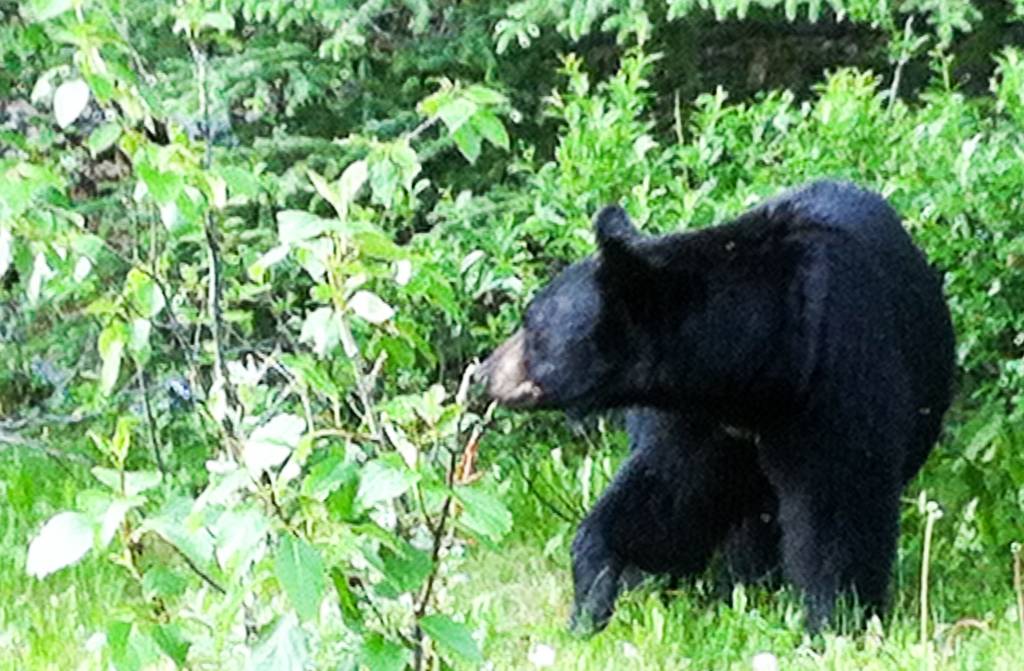
Dhara blogs at It’s Not About the Miles.
Wildlife Tourism: Spotting Wild Buffalo in Wood Buffalo National Park – Canada
In 2017, to celebrate the 150th anniversary of Confederation in Canada, all admission fees for Canadian National Parks had been waived. So, I made it my mission to go to as many of these parks as I could. Naturally I had my dogs tucked into my Corolla with me for the trip. As the vast majority of the Canadian population is along the southern border, I had never had much reason to go beyond the north shore of Lake Superior.
On this trip, we left Lake Superior far behind and drove to our farthest point north ever: Wood Buffalo National Park which straddles the border of Alberta and the Northwest Territories. As it was September, there weren’t many other people in the park and it felt as though we had the entire place to ourselves; well us and the buffalo. I stopped in the first parking lot I saw and came face to face with my first wild buffalo. He did not seem to care about the little grey car that he towered over as he continued grazing.
“Our task must be to…embrace all living creatures and the whole of nature and its beauty.” - Albert Einstein Share on XWe stayed to watch him then left to explore the rest of the park. I will never forget driving over a small hill and seeing a buffalo walking down the road towards me. He moved off the side of the road until I passed and then calmly continued on his way. He was even on the correct side of the road; a very proper road hog! We saw a few more that day and each time it felt like a special encounter. Later on in our trip, we saw more buffalo and other wildlife, but this was our first encounter with such majestic and impressive creatures in a place so far from home and is something that I will never forget.
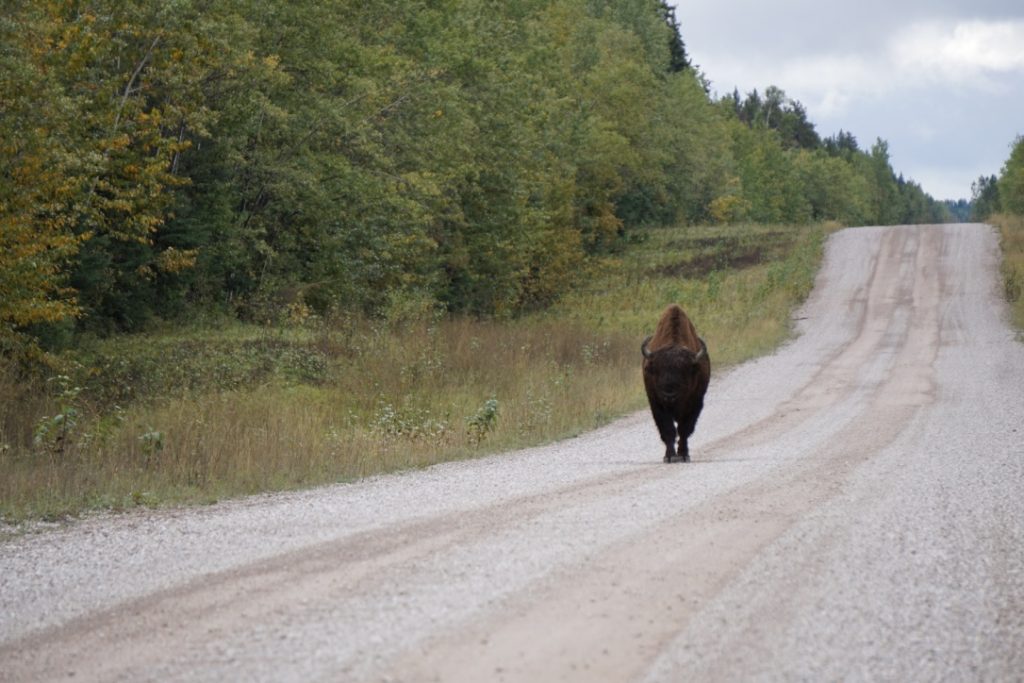
Kristal blogs at Adventure Dawgs.
Whale Watching Near Tadoussac, Quebec, Canada
On the Canadian coast just 2.5 hours away from Quebec City, is one of the world’s best places for whale watching wildlife tourism: Quebec’s St. Lawrence Marine Park. The conditions here are perfect for these beautiful creatures to come into the bay and pop their heads up – hence many locals and tourists coming every year to say hello and witness their beauty! However, Mother Nature is a tricky lady, and it turns out that spotting a whale can sometimes be much more of a challenge than one expects…
I attempted to spot a whale (and their many friends) in the first week of whale watching season. My initial excitement started to dwindle as we sped around and around in circles, trying to hit the whale jackpot…but all that could be seen was water, a lighthouse and a lot of leisurely seals.
When we were at the point of losing hope, my friend suddenly leapt up, frantically pointing in the distance. ‘There it is!’ she yelped. But in all honesty, all I could see was a black dot that didn’t make much sense. Concluding it must be a whale, I started pointing out many of these black dots, but between you and me, I think they might just have been dirty icebergs. It was just pure bad luck, as other visitors rave about this area and the photos I’ve seen online are ace. Unfortunately, all I left with was a pair of very wet knickers and some photos of ice. I recommend you try your luck! You can find out how to go whale watching in Tadoussac here.
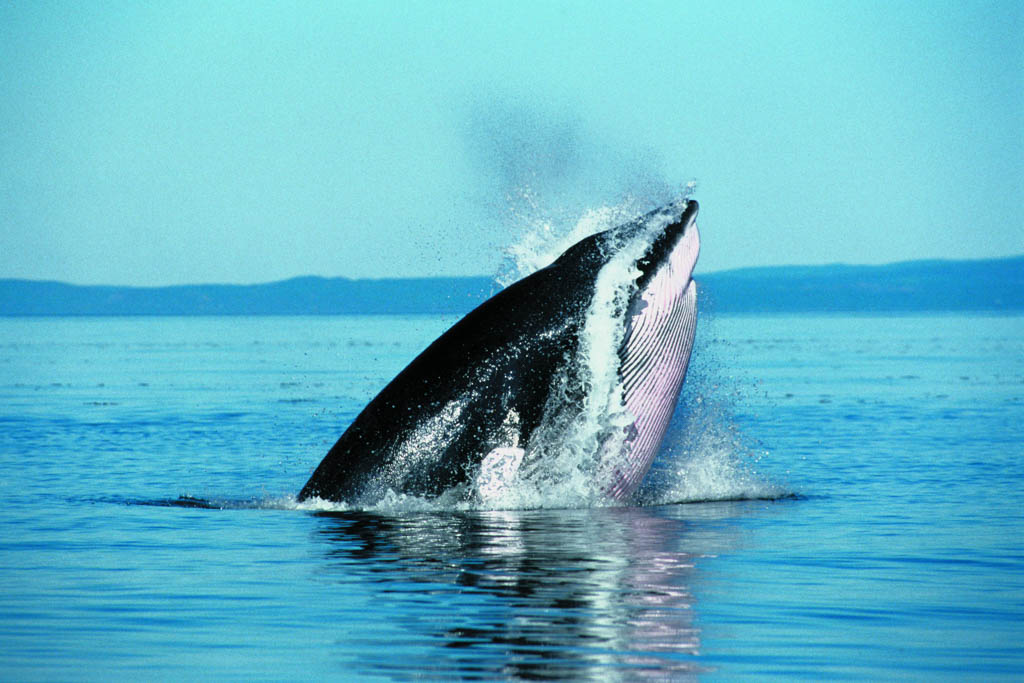
Alice Teacake blogs at Teacake Travels.
Wildlife Tourism Encounters: Wildlife in Europe
Kayaking with Seals in the United Kingdom
The wildlife in Europe is unparalleled. The UK has lots of beautiful wildlife that you can encounter if you are in nature. We recently went on a kayaking trip with Nomad Sea Kayaking company. It was a great day trip for us from London. We took the train to Dovercourt station, and then after a lovely 20-minute leisurely stroll along the beach we arrived at the launch point.
Our guide Kurt had a lot of knowledge about the area. He is very passionate about protecting wildlife, wildlife tourism and the environment. He encourages a beach clean on all of the kayak trips he organises. Kurt told us how to behave when we reach the seal colony. We had to be quiet and not approach the seals, but let them get close to us if they wanted.
It was such an incredible experience to see the seals pop their head out from the water and stare at us. They were quite curious and would get closer and closer to us. After about 15 minutes we got the signal to start paddling and we slowly left the seal colony area. We covered around 13 km that day with the kayak. There was a strong wind and waves, which made the day challenging, but it was so worth it! A truly amazing adventure with the highlight of seeing the seals in their natural habitat!

Alice Teacake blogs at Teacake Travels.
Want to learn more about wildlife tourism in the Americas, see North American Wildlife: An Illustrated Guide, or Saving America’s Wildlife.
If you like reading about wildlife tourism encounters, check out Wildlife Encounters In Africa That Will Amaze You and Wildlife Tourism Encounters in Asia and Australia.
In the meantime, you can see more beautiful wildlife during day trips to Kangaroo Island, Australia.
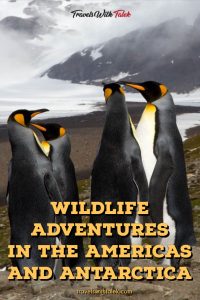

BTW, if you are getting ready for your trip, make sure to take advantage of these useful, money-saving links to book your trip:
- Research and book your flight with Skyscanner. I have found them to be the best because they list all airlines including the budget ones. You are always sure of having researched all options.
- For car rental around the world, Discover Cars has flexible pickup and drop-off options, I recommend Discover Cars.
- Book your accommodation with Booking.com. I find they have a wide selection and a nice, user-friendly, transparent website.
- Protect your trip and, more importantly, protect yourself with travel insurance. I use Travelinsurance.com and have been very happy with them.
- For more general tours to any destination or attraction, book with Viator. Check them out.
- Need a visa? Get your visa for all countries with Passport Visa Express.
- Looking for a cool walking tour to explore a city? My favorite walking tours are offered by Take Walks.
- Food and drink tours are the best way to enjoy a city. And Devour Tours are my favorite.
- Looking for a good VPN to protect your security, privacy and freedom online while traveling? Nordvpn is your best option.
- The best and most economical way to stay connected while traveling is with an Airalo eSIM.
I personally use, and can recommend, all the companies listed here and elsewhere on my blog. By booking through these sites, the small commission we earn – at no cost to you – helps us maintain this site so we can continue to offer our readers valuable travel tips and advice.















